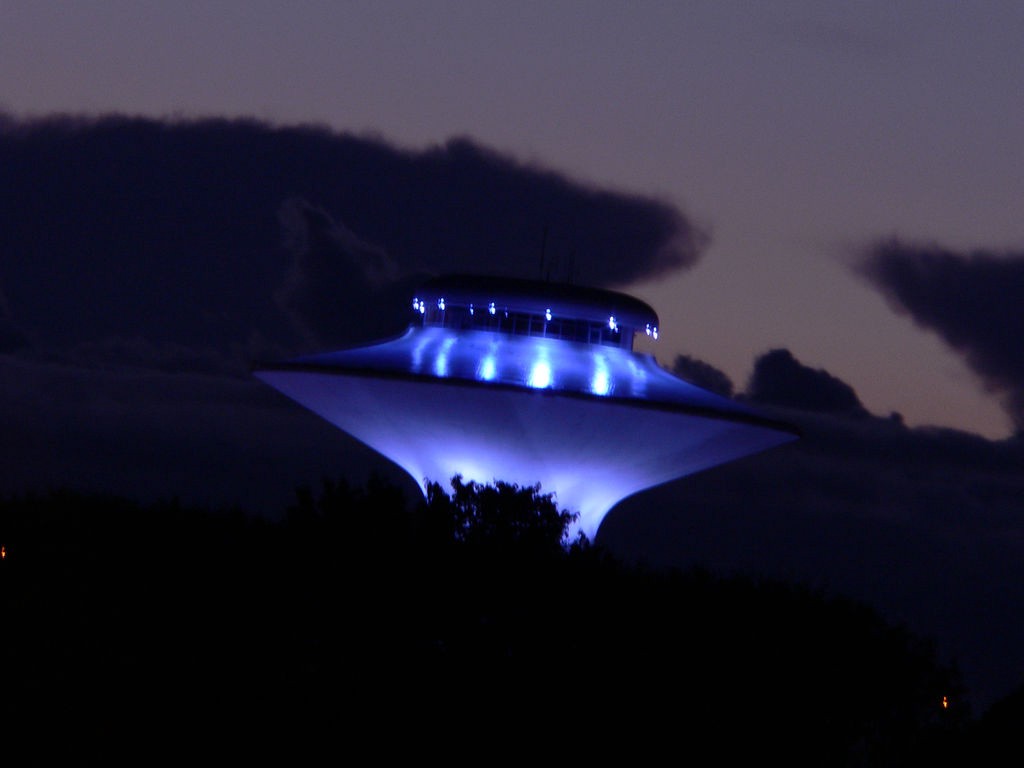essays
This Weird Online Fiction About Football Is Also a Crash Course in Empathy
Heaven is scary in the groundbreaking digital fiction “17776”

Electric Lit is just $4,000 away from our year-end fundraising goal of $35,000! We need to hit this target to get us through the rest of 2025, and balance the budget for 2026. Please give today! DONATE NOW.
It’s been one year since Jon Bois’s visceral and unparalleled 17776 was posted on SB Nation, and trying to define it is still a half-impossible endeavor. Wikipedia calls it a “serialized speculative fiction multimedia narrative” — the story unfolds as a transcription of untagged, color-coded dialogue, images, and gifs. Its alternate title — What Football Will Look Like in the Future — is technically an accurate depiction of its subject matter, but it might be better described as “three sentient satellites pass the time watching America’s now-immortal population try to pass the time.” I could say it’s a hilarious and heartbreaking meditation on what it means to be human, even when you have been stripped of the hallmarks and drawbacks of the human body. But the best way to experience 17776 is to just click the link and read — and watch — it for yourself.

Three satellites have been roaming space for thousands of years: Pioneer 9 (Nine), Pioneer 10 (Ten), and the Jupiter Icy Moons Explorer (Juice). Nine is the last of the three satellites to gain consciousness, and they serve as our window into this new world, our questioning tether. Ten is their encouraging, self-appointed sister, Nine’s guide (and ours) to understanding America in 17776; Juice is a non-sequitur, rip-roaring delight with diction pulled straight from the depths of the internet.
“On April 7th, 2026, people stopped being born. On the same day, people stopped dying, and people stopped aging,” Ten explains.
“ham cheese. ham cracker. cheese cracker. ham and cheese cracker. ham and cheese,” Juice says. “rip lunchables”
That extra “7” in 17776 isn’t a typo; the bulk of the action in the story takes place 15,000 years in the future. It’s a future that’s at once totally alien and strangely familiar: for reasons that no human or satellite has been able to puzzle out, people stopped dying, aging, and being born in 2026. Everyone on earth in 17776 has been alive for 15,000 years, too. In the time between, humanity fixed everything that needed to be fixed and solved everything that needed to be solved (or, more accurately, decided that they had reached their plateau). All that’s left for mankind now is recreation — they make games, and they play them. In America, they play football.
17776 takes the shape of a horror story where the agony of boredom is the enemy, and empathy the triumphal hero. It’s thrumming with the barely-contained unease of this new world. 17776 doesn’t dwell on the terror of its premise, but horror is pressing up against every part of the narrative from underneath, right below the surface. It’s is a masterwork of suspense, both in individual chapters like Chapter 17 (“No no no no no no.”) and over the course of the whole story (my heart stopped when Nine’s battery warning flashed in Chapter 23). It’s a suspense that makes your skin crawl from the very beginning: though you can access 17776 from a dedicated title page if you’ve visited the link before, it’s first introduced as a seemingly normal SB Nation story that slowly dissolves into repetitions of “Something is terribly wrong. Something is terribly wrong.” In Chapter 1, you feel Nine’s raw desperation and isolation, compounded by the fact that neither you — nor they — understand what’s happening to them. And the format itself just increases the unease — in order to continue the narrative, you have to physically scroll farther and farther, the months and years of the calendar stretching into physical space.
17776 takes the shape of a horror story where the agony of boredom is the enemy, and empathy the triumphal hero.
Even when the narrative dives into the details and goes long about the minutiae of the specific football games, the satellites uncover the human impetus behind each increasingly unbelievable game format. “Boredom is their only enemy,” Ten explains. “And they get up in the morning and fight it every day of their eternal lives.” “the point of play is to distract yourself from play being the point,” says Juice. In Chapter 20, Eddie Krieger — a player who has been hiding out in the same cave, with a football that’s still in play, for 9,313 years — admits to the agony of endlessness: “The game only barely matters to me at this point,” he says. “It’s enough to keep me going. It’s an objective, you know? It’s an objective.” The stranger Eddie is talking to is a missionary — a true believer in God—but he offers up one of the most chilling lines in 17776: “Maybe I am in Heaven, and Heaven is scary.” That’s perhaps the best description for the world of 17776, where mundane anxieties and griefs are swept away in favor of the deeper horrors of eternity: a scary heaven.
The fact that 17776 is funny, and often beautiful, keeps you at arm’s length from the abject horror of what endless life on Earth would actually look like. While Bois fleshes out his world with an enormous amount of detail, there are certain questions that are never answered. Are people unkillable, as well as immortal? Has no one tired of soldiering through eternity and tried to find the answer to that question? But no one talks about death — self-imposed or otherwise — except as a relic of a time that no longer exists.
17776 looks its premise in the face with relentless optimism — an optimism that I found a little bit hard to believe. When Nine asks Ten why technology hasn’t advanced in the past 15,000 years, she replies that “those advances would inevitably intrude on their humanity. People wanted to walk. They wanted to take the bus that smelled like cigarettes. They wanted those precious three minutes between asking a question and knowing the answer.”
Yes, it’s the end of the world; yes, whole cities have sunk into the sea, but our worst impulses have vanished with them.
I’m not sure if this is true of the world we live in, but it’s true in the world of 17776, where all other ills have been done away with. Yes, it’s the end of the world; yes, whole cities have sunk into the sea, but our worst impulses have vanished with them. And that’s because 17776 loves people. That’s its antidote.
It focuses on people at their best and most human, which is made doubly beautiful by the fact that everyone in 17776 has either learned to become human or fought to maintain their humanity in the face of becoming something different. (Are we human without all our worst parts? Are we human without death?)
17776 loves the way that people love people, and the way that people love satellites, and lightbulbs, and the useless, myopic detail of the games we create. The whole narrative is an ode to that same character trait that causes people to reach out and try to pet their Roombas — or to affectionately draw fan art of anthropomorphized satellites.
Juice spends all of Chapter 10 explaining the world’s ugliest stadium with all the pride of a parent, exhibiting an enthusiastic obsession with the people who built it. Whenever anyone apologizes for being boring or annoying, their conversational partner is eager to reassure them. “No, no, no, it’s a beautiful story,” says Nancy in Chapter 8, after listening to a citizen of Bee, Nebraska, talk about a small and inconsequential ballroom. “I love it.”

This hyperempathy is overflowing from every facet of 17776, but I was most affected by it in Chapter 20, where Eddie Krieger — the man in the cave whose isolation rivals Nine’s — is found by the missionary, a member of a group called No Rock Unturned. “No Rock Unturned is a project made up of people like me who walk all across America,” the man begins cheerfully. “Our goal is to eventually count everyone in America as a friend!” In this version of America’s future, no one is left behind; no one and nothing is allowed to be lonely or forgotten — not even the ordinary landmarks that Juice shows Nine in Chapter 16, ponds and sidewalks that no one has visited in thousands of years.
17776 loves small things by watching them. It lavishes attention on things that we would not consider meaningful in 2018, much less 15,000 years in the future. Ten recites a eulogy for the Livermore Bulb, a lightbulb that burned from 1901 to its untimely destruction-by-football in 17776: “The bulb lived, to us, and life deserves to be immortal,” she says. “It will live on in our memories, where it will perhaps find more happiness than it ever did hanging from a ceiling. We love you and we will miss you.”
Even the close-to-last words from our three favorite satellites are simply a mutual declaration: “I love you guys.” “Love you too.” “love y’all too”
After the end of the world, human curiosity is still intact, and it’s what keeps us alive. So even when 17776 centers on the futility of endless play, it walks that razor’s edge between horror and the beauty of love. People latch onto football out of desperation, because it gives them a reason to live. People latch onto football because creating things with other people is what we’re built for.
It’s 2018 now, which means we’re one year closer to April 7th, 2026. The Jupiter Icy Moons Explorer is being tested right now, and we’re fast approaching its 2022 launch. We’re one year closer to 17776, but we seem to be moving farther from its idealized picture of humanity with every day that passes. The past year, on a global level, has been exhausting, and heartbreaking, and full of reminders of the worst and most inhuman things that people can do to one another. The horror of the world is enormous and overwhelming.
We’re one year closer to 17776, but we seem to be moving farther from its idealized picture of humanity with every day that passes.
But: It’s 2018, and right now, the Livermore Centennial Lightbulb is still burning in its socket, soft and yellow-orange, just as it has been for 117 years. Its glass is cloudy. The light it gives off is not bright; it hardly even fills the firehouse of the Livermore-Pleasanton Fire Department. But it is steadfast, it is cared for, and it is loved. It’s a beacon — for some, a pilgrimage.
17776 gave its residents immortality. What they did with it — and the kindnesses they chose to do to their neighbor — was entirely up to them. And every day, they choose to latch on to the things they need in order to survive one more day, because with every new day comes the chance to notice someone for who they are, and for who they are capable of becoming.
The verse on the missionary’s question list in Chapter 20 is Philippians 4:8: “Finally, brothers and sisters, whatever is true, whatever is noble, whatever is right, whatever is pure, whatever is lovely, whatever is admirable — if anything is excellent or praiseworthy — think about such things.”
It’s this sense of awe that permeates the narrative as much as — if not more than—the horror does. “the mere fact that anything exists is a miracle in the first place,” says Juice. 17776 pays unwavering attention to the beauty in ordinary things, because in the end, that is what’s most important: remembering the things that were, and loving the things that remain.
The world is big, and it is terrible. We are not the sun, or even a street lamp. But each one of us can be the Livermore bulb. In 17776, Jon Bois sees the love that we are capable of. Each one of us can pour ourselves out in the way that everyone in 17776 does, and the way the Livermore Bulb does: quietly and steadily, with empathy for everything and everyone. We can notice, and from noticing, watch; we can watch, and from watching, love.
We can choose to keep living for love. It’s what 2018 needs from us.








